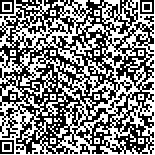下载中心
优秀审稿专家
优秀论文
相关链接
摘要

针对Wishart分类器对功率具有较强的依赖性, 不易区分极化SAR影像上水体、道路、裸土、阴影等弱后向散射地物的问题, 提出一种利用极化目标分解和假设检验的弱散射地物统计分类方法。即在H-α初始化的基础上, 使用似然比检验得出像元与每个类中心的相似性, 并将其作为像元与类中心的距离测度。根据第一类错误概率和统计量的概率分布, 将相似性很小的强散射点归为拒绝类, 减少对分类的影响;对不能显著拒绝的像元归入具有最小统计量的类别中。通过使用E-SAR L波段和Radarsat-2 C波段全极化数据进行实验, 结果表明本文方法有利于弱散射地物极化信息的利用, 能够实现水体、道路、裸露的土壤和阴影等的精确分类。
关键词:
极化SAR(PolSAR) 似然比检验 弱散射地物 非监督分类The Wishart classifier has the major issue of drastically favoring the intensity over the polarimetric information, so the weak backscattering targets such as water, road, bare soil and shadow in Polariemtric Synthetic Aperture Radar (PolSAR) image are hard to be made fine distinction. This paper proposed an unsupervised statistical classifier of the weak backscattering scatterers based on H-α target decomposition and hypothesis test. Likelihood ratio test is used as a distance measure to compare the similarity of a pixel and class centers. Pixels with small similarity are rejected according to the first type error and the distribution of the test statistics to reduce the effect on classification. The others pixels being not rejected are assigned to the class with the smallest statistics. The experiential results using E-SAR L band and Radarsat-2 C band quad polarimetric image demonstrate that this algorithm making advantage of the polarimetric information, improves the classification accuracy of the weak backscattering scatterers greatly.

